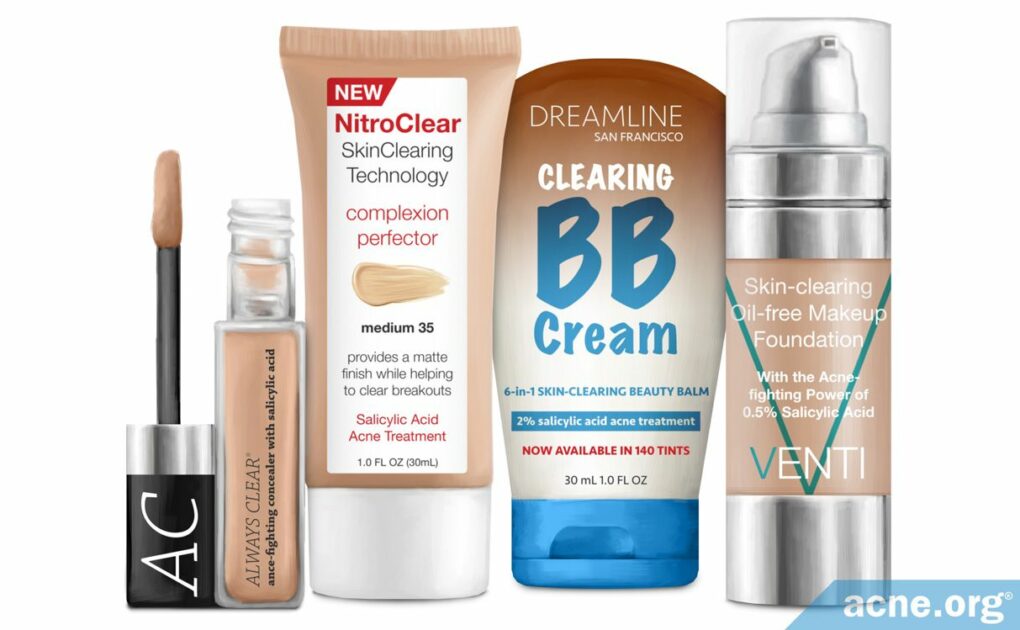Maybe a Little Bit, but Only as a Preventative, Not a Treatment

The Essential Info
Most so-called “acne-fighting” cosmetics contain a small amount of a medication called salicylic acid. Some evidence suggests that salicylic acid in low concentrations may improve acne. But does that mean that cosmetics that contain salicylic acid are better for acne? Not necessarily.
First, when salicylic acid is included in makeup, it is normally at 0.5%, which is an extremely low percentage that is unlikely to dramatically clear the skin. Also, salicylic acid can be a tricky ingredient, and for it to do its job at fighting acne once inside a product, it must be in an acidic formulation that does not contain competing ingredients.
Here is my advice:
- If you are suffering from active acne, stick to proven topical acne medications rather than relying on cosmetics as a treatment. Avoid wearing acne-fighting makeup while using topical acne treatments, because the combination may over-dry and irritate the skin. Opt for regular, non-comedogenic (non-pore-clogging) makeup instead. Having said that, if you currently own makeup that contains 0.5% salicylic acid, it probably won’t hurt to finish it up. Such a small percentage of salicylic acid is unlikely to cause big problems.
- If you are acne-prone but not experiencing a breakout, acne-fighting makeup may be worth a try and might slightly help to prevent future breakouts. When you are looking for one, choose a large brand name aimed at a younger audience and try to find a makeup that contains 2% salicylic acid.
Whenever you buy any makeup product, check the label and avoid products containing comedogenic (pore-clogging) ingredients.

The Science
- Guidelines for Choosing Between Regular and Acne-fighting Makeup
- Acne-fighting Makeup: The Full Scoop
- The Verdict on Anti-acne Makeup
- The Bottom Line
Many makeup products, like foundations, concealers, and BB and CC creams, now come in acne-fighting varieties. In most cases, the label “acne-fighting” just means that the makeup contains a small amount of salicylic acid, a common anti-acne ingredient in over-the-counter products. The concentration of salicylic acid in makeup is usually 0.5%, but can be up to 2% in some products.
Do these acne-fighting cosmetics live up to the hype and really improve acne? The short answer is that they might help a little, but likely not nearly as much as other proven topical treatments. Also, there is a small concern that wearing anti-acne makeup while also trying other skin treatments can cause unwanted side effects, such as excessive skin dryness and irritation, and any time we see the skin out of balance, more acne can result.
So is acne-fighting makeup worth buying? Based on everything we know about acne, we have put together some guidelines to help you decide.
Guidelines for Choosing Between Regular and Acne-fighting Makeup
- If you have active acne, opt for a proven treatment and wear regular makeup: Research suggests that 2% salicylic acid is somewhat effective against acne, but other topical treatments are far more effective. If you are suffering from active acne, start a treatment regimen with proven efficacy. Avoid wearing anti-acne makeup while using other topical acne treatments, because this can lead to excessive skin dryness and irritation, which in turn can worsen acne. Instead, wear regular makeup while undergoing topical acne treatment.
- If you are acne-prone but do not have active acne, feel free to try anti-acne makeup: There is some evidence that small amounts of salicylic acid can slightly help to fight acne. If your skin is currently clear, but you are prone to breakouts, acne-fighting makeup might be a baby step in the direction of preventing breakouts. Whenever you try any new makeup product, however, keep an eye out for skin irritation or allergies.
- Whichever kind of makeup you choose, make sure it is free of comedogenic (pore-clogging) ingredients: Always check the label of any makeup product before buying it. Avoid any products with comedogenic ingredients. The table below offers a list of common comedogenic ingredients.
List of Common Comedogenic Ingredients in Makeup
We have reviewed a large body of research on how likely various ingredients are to cause comedones (clogged pores) and compiled two lists:
- Definitely avoid: These are ingredients that people with acne-prone skin should definitely avoid, because compelling evidence shows that they are comedogenic.
- Consider avoiding: These are ingredients that people with acne-prone skin may want to consider avoiding, because some evidence indicates that they might be comedogenic.
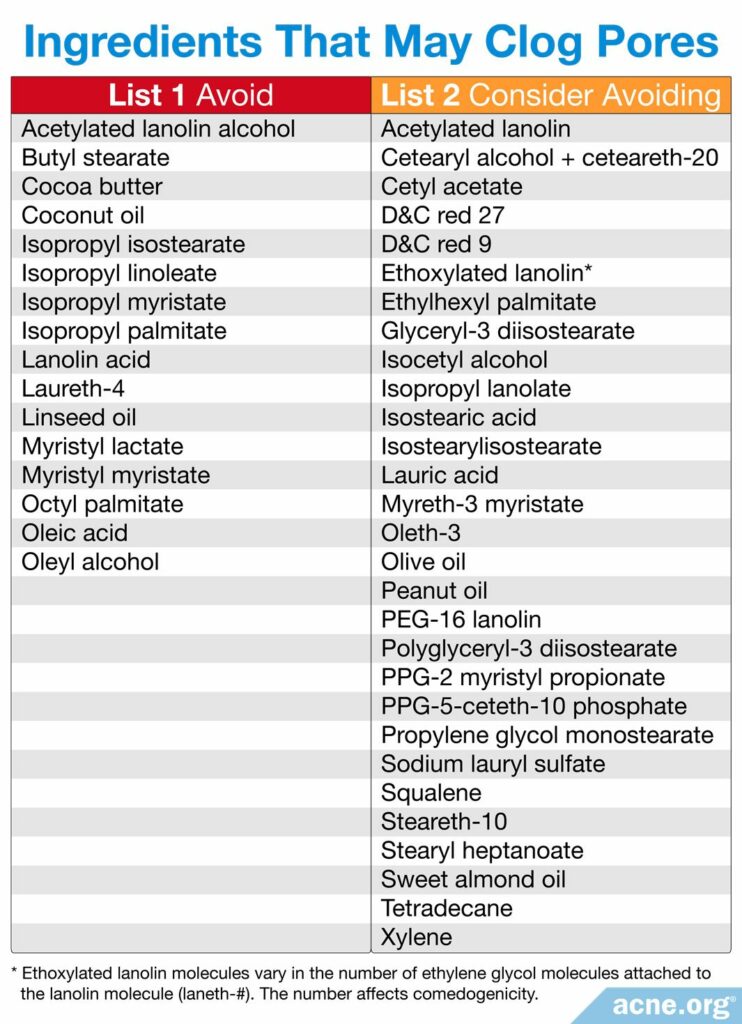
The results of scientific studies related to the comedogenicity of Vaseline® petroleum jelly are contradictory. Namely, in several studies using REA and the human method, it was shown to be comedogenic. However, a more recent study disproved this by pointing out that the REA method used previously was not accurate. In repeated analyses with an improved REA method, authors showed that Vaseline® petroleum jelly does not possess a pore-clogging potential. Considering that this product was also tested on the face of acne patients and that no worsening of acne was observed, it can be concluded that there is no evidence that it is comedogenic in humans.4
Curious to know more about the science behind these recommendations? Let’s take a closer look at what we know about acne-fighting makeup.
Acne-fighting Makeup: The Full Scoop
Cosmetics in the United States are regulated by the Food and Drug Administration (FDA)–the same government body that approves drugs. However, unlike with drugs, the FDA does not require manufacturers to test cosmetics in clinical trials before releasing them to the market.1 Therefore, although a makeup product package may claim that the product fights acne or clears the skin, these claims have never been scientifically tested.
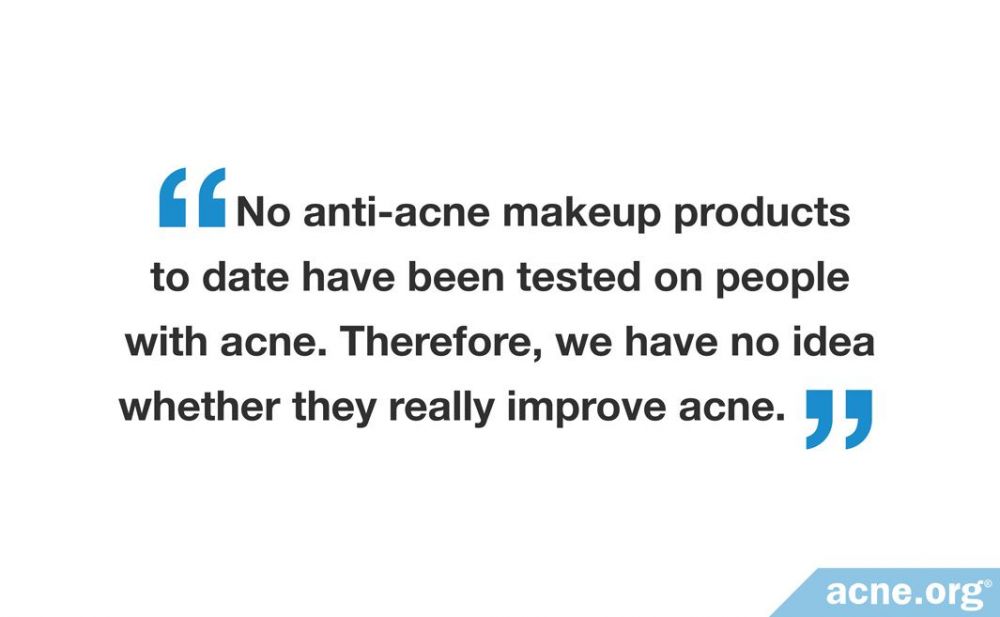
In fact, no anti-acne makeup products to date have been tested on people with acne. Therefore, we have no idea whether they really improve acne. However, we do know that almost all anti-acne makeup contains salicylic acid. Let’s look at the evidence that salicylic acid might help with acne.
Scientific Evidence That Salicylic Acid Helps with Acne
Cosmetics can legally only contain low concentrations of salicylic acid: 2% at most, and normally you’ll see them with 0.5%. Only five studies have looked at the efficacy of such low concentrations of salicylic acid against acne. Of these, only two studies provide somewhat convincing evidence that salicylic acid improves acne.
- Two studies with confounding factors: Two studies tested treatments combining salicylic acid with other medicinal ingredients. In other words, we cannot be sure whether the treatments worked because of salicylic acid or because of the other ingredients. Therefore, the results of these two studies cannot tell us whether salicylic acid really works against acne.
- One weak case study: The third study was a case series–a descriptive study tracking patients treated with salicylic acid. This type of study describes what happens to a small number of patients after they take a medication, but cannot prove that the medication is what caused the results. Therefore, doctors and scientists consider a case series very weak evidence. In other words, this study can only help us decide whether salicylic acid works against acne.
- Two reasonably strong studies: The remaining two studies were randomized controlled trials, which are considered the “gold standard” of scientific evidence. Both studies concluded that 2% salicylic acid can improve symptoms of mild to moderate acne.2,3 It is important to note, however, that both of these studies were sponsored by pharmaceutical companies, which may potentially introduce a chance of bias. Also, since most makeup products contain only 0.5% salicylic acid, it is unlikely that makeup with tiny percentages of salicylic acid will provide the benefits that the people in these two studies experienced. Let’s take a closer look at these two studies to decide whether we can trust their findings.
Study #1
In this study, 114 patients with acne were randomly split into two groups, one of which received a lotion containing salicylic acid, and the other received a placebo (a similar lotion lacking medicinal ingredients). Neither group was given salicylic acid – containing makeup. Instead, they were simply given a salicylic acid lotion. The study was also “double-blind,” which means that neither the researchers nor the patients knew who was receiving the real salicylic acid lotion and who was receiving the placebo. Scientists consider a double-blind randomized controlled trial like this highly reliable.
The researchers concluded that the salicylic acid lotion was effective in improving symptoms of mild to moderate acne. They wrote, “This study demonstrated that twice daily application of 2% salicylic acid lotion…was significantly better than placebo in mild to moderate acne.”2 However, it is important to remember that makeup typically contains only a fraction of this concentration of salicylic acid.
Expand to read details of study
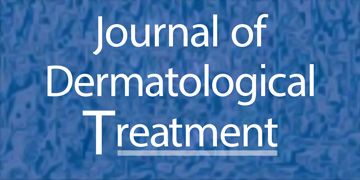
The study was published in 1996 in the Journal of Dermatologic Treatment. A total of 114 patients with mild to moderate acne participated in the study for a period of 12 weeks. Half of the patients applied a lotion containing 2% salicylic acid to their skin twice a day, while the other half applied a placebo lotion twice a day. The researchers counted the patients’ acne lesions after 4, 8, and 12 weeks of the treatment, and found that the patients using the salicylic acid lotion experienced a decrease in the number of lesions compared to the patients using the placebo.2
Study #2
In this study, 34 patients with acne applied salicylic acid cream to one side of the face and a different topical treatment to the other side of the face for one month. Again, the patients received a topical cream, not makeup, containing salicylic acid. Unlike the first study, this study was “open-label,” which means both the patients and the researchers knew which side of the face was receiving which treatment. This introduces a strong possibility of bias into the results. Therefore, this study provides moderate, but not very strong, evidence for the efficacy of salicylic acid against acne.
The researchers found that salicylic acid was as effective against acne as a standard topical acne treatment. They wrote, “Our study demonstrated that 2%…[salicylic acid] has a similar efficacy with adapalene plus benzoyl peroxide in mild to moderate acne treatment.”3 Again, it is important to keep in mind that makeup typically contains only a quarter of this concentration of salicylic acid.
Expand to read details of study
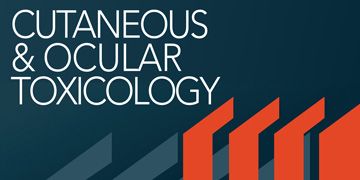
The study was published in 2018 in the journal Cutaneous and Ocular Toxicology. Thirty-four patients with acne applied a 2% salicylic acid cream to one side of the face and 5% benzoyl peroxide with 0.1% adapalene to the other side of the face for 28 days. At the end of this period, the side of the face treated with salicylic acid showed, on average, a 47.9% decrease in papules/pustules, a 43.1% decrease in inflammatory lesions, and a 44.1% decrease in the total number of acne lesions. The side of the face treated with benzoyl peroxide and adapalene showed a very similar decrease in the number of acne lesions.3
The verdict on salicylic acid and acne
The results of these two studies suggest that 2% salicylic acid is somewhat effective against acne. However, more research is necessary before we can say just how well salicylic acid fights acne. Moreover, most makeup products contain only 0.5% salicylic acid, and it remains unclear whether this tiny concentration would also help against acne and, if so, to what degree.
The Verdict on Anti-acne Makeup
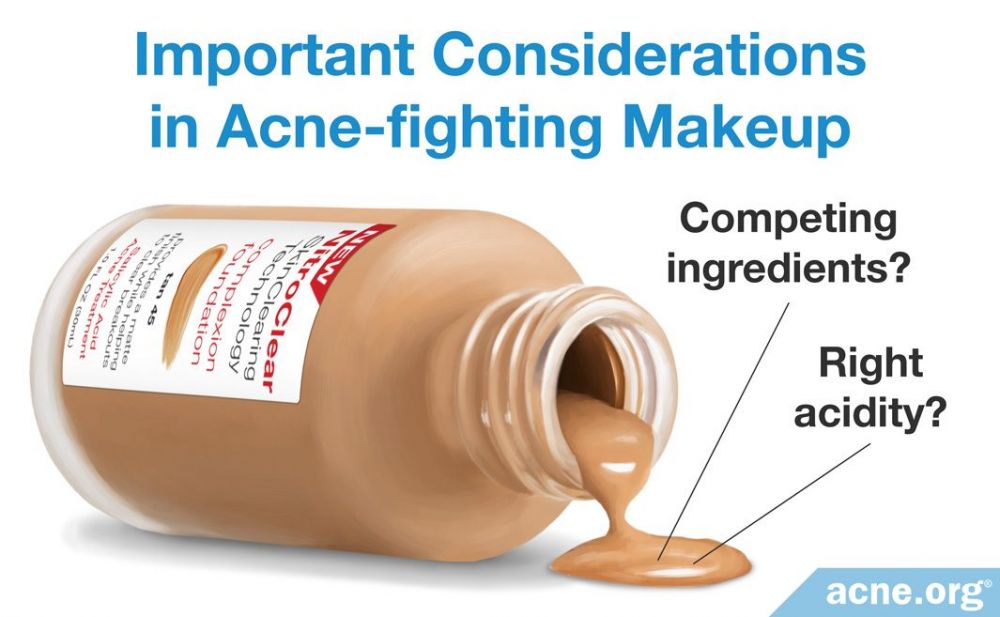
One thing to keep in mind is that even if salicylic acid works against acne, this does not automatically mean that salicylic acid in makeup will work against acne. This is because salicylic acid is a finicky chemical. It needs to be in a product with specific conditions, like a particular acidity, to do its work without irritating the skin. Furthermore, salicylic acid has very low bioavailability, which means only a fraction of what gets on the skin actually works.3
We do not know whether makeup manufacturers fine-tune their products to get the conditions just right for salicylic acid to be effective. There are too many factors at play in producing makeup, such as optimizing the product’s texture, making sure the makeup does not smear easily, and so on. In other words, we simply do not know whether the salicylic acid in anti-acne makeup is really functional.
This is why, if you are suffering from active acne, anti-acne makeup is not the ideal approach to improving your acne. Topical treatments containing 2% salicylic acid are a better bet, but still far from other proven options for treating acne.
The most effective course of action is to use benzoyl peroxide or a prescription treatment. There is a range of options for treating acne topically:
- Benzoyl peroxide
- Topical antibiotics
- Topical retinoids
- Azelaic acid
- Dapsone
- Some combination of the above
According to the American Academy of Dermatology, which assigns skin treatments a rating based on the strength and quality of the evidence, all of the above treatment options are more highly rated than salicylic acid. In other words, if you want to find an effective topical treatment for your acne, there are options out there better than anti-acne makeup or salicylic acid in general.
Note: Even though you see antibiotics on this list multiple times, there is an extremely strong case to be made that antibiotics are not a good course of action when it comes to acne.
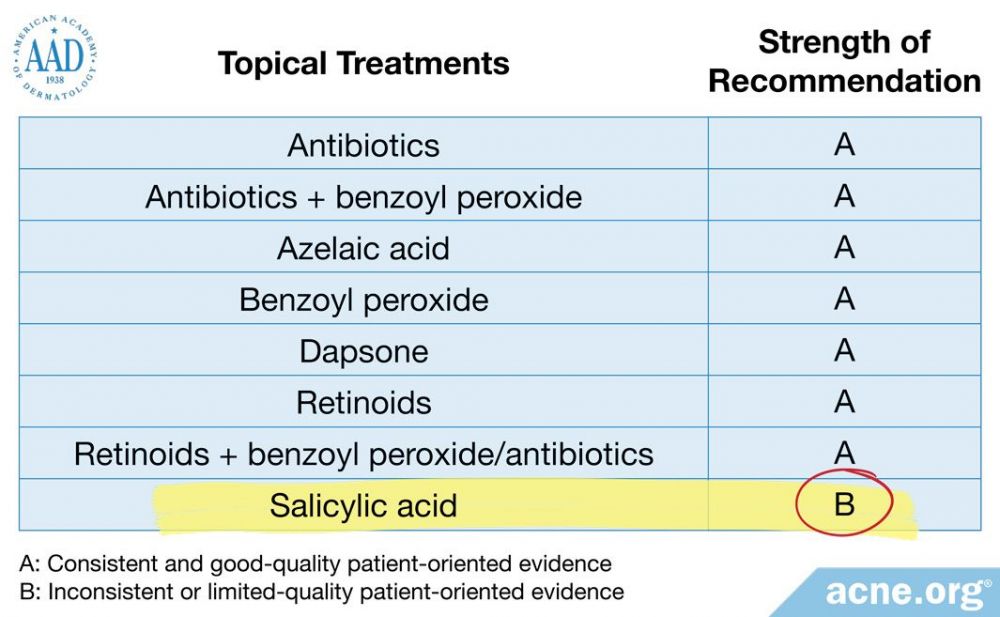
The Bottom Line
Anti-acne makeup containing salicylic acid may marginally help to prevent breakouts but is almost certainly less effective than proven topical acne medications. If you are suffering from active acne, skip the anti-acne makeup and choose a proven acne treatment. However, if you are acne-prone, but your skin is currently clear, anti-acne makeup may be worth a try. Always remember to check the label of any makeup you purchase to make sure it is free of comedogenic ingredients.
References
- U.S. Food and Drug Administration. FDA Authority Over Cosmetics: How Cosmetics Are Not FDA-Approved, but Are FDA-Regulated (2013). https://www.fda.gov/cosmetics/cosmetics-laws-regulations/fda-authority-over-cosmetics-how-cosmetics-are-not-fda-approved-are-fda-regulated
- Eady, E., Burke, B., Pulling, K. & Cunliffe, W. The benefit of 2% salicylic acid lotion in acne a placebo-controlled study. J Dermatol Treat 7, 93 – 96 (1996). https://www.tandfonline.com/doi/abs/10.3109/09546639609089537
- Zheng, Y. et al. Efficacy and safety of 2% supramolecular salicylic acid compared with 5% benzoyl peroxide/0.1% adapalene in the acne treatment: A randomized, split-face, open-label, single-center study. Cutan Ocul Toxicol 1 – 21 (2018). https://www.ncbi.nlm.nih.gov/pubmed/30173582
 Acne.org Products
Acne.org Products